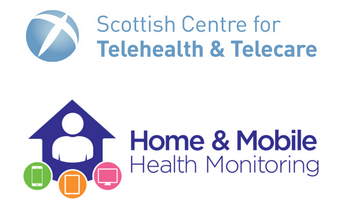“Towards Scaling Up Home and Mobile Health Monitoring 2015-2018”
The Scottish Centre for Telehealth & Telecare (SCTT) have published their year 3 evaluation of Home and Mobile Health Monitoring (HMHM); We’re proud that Florence is formally evidenced as a significant contributor across Scottish Health Boards.
“The most frequently deployed HMHM technology was Short Message Service [Florence]”
We are thrilled to be able to share this evaluation as an example of how Flo’s simple methodology and unique persona continues to improve patients lives. The report also recognises the passion and commitment from Scottish Community of Practice members who are continuing to innovate with Flo, providing high quality care that supports increased self-management and personal responsibility for health.
The report takes an in depth look at how the HMHM programme has enabled health care innovation with technology to take place across Scotland, including the challenges faced, learning, and recommendations for continued scale-up and adoption.
“This report draws on evidence and valuable experience from across the TEC Funded partners in Scotland and at national level and reaffirms the important foundations that our national work has delivered to date.The report sets out key recommendations as to how we can continue to shape and inform our future national HMHM activities to support our scaling up efforts over the next few years to achieve wider population health benefits and support at scale service transformation.” SCTT – Home & Mobile Health Monitoring
The evaluation compiled evidence from across 12 partners (Argyll & Bute, Ayrshire & Arran, East Renfrewshire, Glasgow City, Highland, Lanarkshire, Lothian, Midlothian, Tayside, West Dunbartonshire, Western Isles & West Lothian) against a specific set of year 3 outcome achievements:
- Higher percentage of the population self-managing their health
- Higher percentage increase in condition control
- Optimised face to face contacts (if needed)
- Improved access to services
Partner sites submitted evidence of how resources were being used efficiently and effectively, or how hospital admissions had been avoided. Importantly, patient and service user feedback is also included in the evaluation.
The report highlights evidence gathered where Flo has supported attainment of the desired outcomes. For example:
- Data from all partners showed that the number of people using HMHM increased from 2,809 in year 1, to 15,765 in year 3. (Higher percentage of the population self-managing, supported by HMHM)
- Local data from Ayrshire & Arran found that Flo supported patients starting online CBT, with 356 service users completing the first session, compared to 108 who did not use Flo. (Higher percentage increase in condition control, supported by HMHM)
- A local patient survey from West Dunbartonshire found that 11 out of 12 patients with COPD said that they saw their GP less frequently after using Flo. (Optimised face to face contacts, if needed, supported by HMHM)
- Local data from Highlands found that 120 people received twice daily responses from Flo after submitting their peak flow readings; they would not have had the same level of feedback without Flo. (Improved access to services, supported by HMHM).
- Heart Failure nurses in Tayside reported 6 amber alert follow-ups, of which 4 led to unscheduled check-ups for patients who would have been a readmission risk if they had let their condition continue to deteriorate; Flo’s responses to patient data helped to avoid 4 potential re-admissions. (hospital admissions avoided by HMHM)
Local surveys, interviews and focus groups were also used to gather comments from patients and service users, and the feedback demonstrated that using Flo was a positive experience.
“I like that Florence reminds me to do my BP. No improvement needed to the service – more like this are needed to take pressure off the NHS”
“It was fantastic. It really reassured me because of my family history of high blood pressure”
“Some people felt that Flo had helped them to stay on track while others said it gave them reassurance, ‘like somebody’s looking over my shoulder just keeping an eye on things.”
Having presented the evidence, the evaluation then goes on to further discuss scale-up and sustainability, with discussion of the implications and recommendations for next steps for the HMHM programme across Scotland as a whole.
To read the full report, please click hereDirect references to Flo can be found on pages: 12, 13, 16, 17, 18, 19, 20, 21, 23, 24, 26, 30, 35, 42, 43, 44, 45, 46, 47, 48.

#Scotland #SCTT #Scottish Centre for Telehealth & Telecare #HMHM #Home & Mobile Health Monitoring #TotallyUnique
